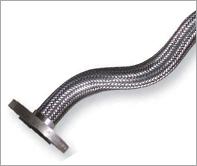
Pipes and hoses are essential for the smooth operation of many different businesses. The ideal goal is to support the movement of air, chemicals, water discharge, suction, and petroleum. You should select the appropriate hoses or pipes to facilitate the transfer of various materials in your industrial application.
Regarding moving fluids between two locations, these two tubes are the most frequently used. Their qualities and uses differ even though they have the same function.
However, they use both interchangeably because most people know the differences between an ideal pipe and a hose. The top flexible hose manufacturer will always want to see the application of these, as if the wrong pipe or hose is used; it could have an adverse effect on the application’s efficiency.
A Hose: What Is It?
The flexible tube of rubber, plastic, and similar materials is called the hose. Its objective is to move gasses or liquids from location A to location B. These hoses’ flexible form allows them to be easily moved around. They are, therefore, perfect for uses where stiff pipes are not an option.
Transferring fluids and pumping gasoline are two uses for hoses. Depending on the intended function and the qualities of the substance to be transported, they come in various sizes, shapes, and lengths. Exhaust hoses, drain hoses, material transfer hoses, safety hoses, and other hose types are among those that are available for use in industrial settings.
The majority of industries for which the hoses are advised include mining, manufacturing, construction, railroads, quarries, and agriculture. These tubes are perfect for conveying hot oils, petroleum compounds, and tar, even at very high temperatures.
A Pipe: What Is It?
Contrarily, the pipe is a tubular conduit frequently composed of several materials, such as metal, plastic, and concrete. Transporting gasses, solids, or liquids from point A to point B is its optimum application. Even pipes are considered efficient for various uses, including industrial processes, plumbing, irrigation, and oil and gas pipelines.
In addition, pipes can be ordered in any size, shape, or material depending on the substance conveyed or its intended application. Either above or below the earth, the pipes are positioned. Furthermore, they can be straight or curved, depending on the need. The pipes can have several fittings or connectors embedded, allowing for proper installation and maintenance.
Most industries that employ pipes are the oil and gas, petrochemical, chemical, power, food processing, HVAC, steel, and plumbing sectors. Pipes are used in an infinite number of applications across several industries.
Selecting between pipes and hoses can be a little tricky for someone unaware of the functional and structural distinctions between the two. The purpose for which you intend to use the hose or pipe will determine your choice.
If you are confused, you can always contact the top flexible hose company, who will take care of your needs and explain how this equipment works. Get in touch now!


Leave a Reply